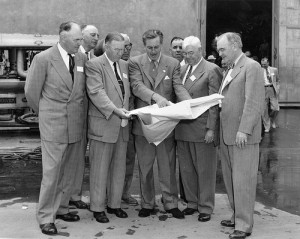
The following series of posts serialises my ‘An Industry Insider’s survival guide to everything you should know about buying and implementing CRM software’ e-guide which can be downloaded here if you prefer to read it in its entirety. This, and the next few posts, will concentrate on the planning of CRM projects:
Why plan?
While it might not sound like the world’s most exciting activity, planning is the cornerstone of a successful project, and as such gives a very high return for a modest investment of time. At its heart is the development of the business case. In other words defining what problems you are looking to solve or desirable outcomes you are looking to achieve.
There are several reasons clarity here is important:
CRM technology is a tool. It won’t produce value on its own. It needs to be used in a coordinated way to produce results, and there are many and varied ways in which CRM technology may benefit your business. Therefore, without a clear objective to guide your project from the outset, it’s unlikely to generate value.
Unless you can convey the benefits of the project in a compelling way, it’s unlikely you will secure the necessary financial investment or, perhaps more importantly, the necessary injection of internal attention and resources required for success.
As you start to build the business case, it’s worth noting that there are two broad ways that CRM technology may improve the operation of your business:
Process automation – where you take what you do currently and improve things through better supporting technology. For example, you might have excellent existing processes in terms of how you attract, develop, and retain customers, but these may be supported through a range of Excel spreadsheets, standalone systems, and databases. CRM technology might create new efficiencies by replacing these silos of information with a central system which allows customer information to be better shared and more beneficially used. In this case your underlying business processes may be adapted to CRM technology, but they are not fundamentally changed.
Process development – where the business processes themselves are re-engineered, or entirely new processes are created. For example, you might adopt a different strategy in terms of how you manage sales leads, or streamline the order management process, or change the way you handle customer issues and complaints. In this case, existing processes may change radically, and CRM technology plays a key role in their successful adoption by the business.
Most CRM implementations tend to focus on process automation simply because it’s generally easier to replicate what you do already. While process automation projects can produce a high pay-back, the greater returns on investment are generally achieved through the process development approach. The organisations that use CRM technology the most effectively, in my experience, tend to focus on achieving process ‘best practice’ and use systems like CRM to drive those best practices through the business.
With either approach, the starting point is to analyse and document how business processes are currently performed, and how they are supported by technology. If the objective is to automate, rather than introduce new process, then the analysis should focus on identifying efficiencies that can be gained through better automation. This does require a working knowledge of CRM technology that you may not currently have. However, as many CRM technologies are available to evaluate free of charge, and, as the general concepts and capabilities of different products are similar, it is not an unduly time-consuming task to gain the necessary knowledge by reviewing some of the mainstream packages.
The simple act of documenting existing business processes often produces a few surprises in terms of how things are actually done as opposed to how it was believed they were done. This may in turn move a project away from process automation to process development. It should be noted though that re-engineering existing processes and adding new best practices is a more challenging and time consuming activity than simply automating what you do already. There’s no single way to go about doing this, and it can be the product of careful analysis, internal brainstorming, consulting with customers, researching how other top-performing companies operate, and accessing the knowledge of external consultants.
However they are achieved, the output from these exercises should be some clear statements regarding the beneficial outcomes. For example: ‘By streamlining and automating the order process, we expect to reduce the time to fulfil orders by two weeks, and reduce the cost of processing them by 40%’, or: ‘By better identifying and segmenting our customers, we can better create relevant communications and offers with a view to increasing our sales to the customer base by 20%’.
The CRM planning process will be continued in the next post.
![[Facebook]](https://www.mareeba.co.uk/blog/wp-content/plugins/bookmarkify/facebook2.png)
![[Google]](https://www.mareeba.co.uk/blog/wp-content/plugins/bookmarkify/google-plus2.png)
![[LinkedIn]](https://www.mareeba.co.uk/blog/wp-content/plugins/bookmarkify/linkedin2.png)
![[Twitter]](https://www.mareeba.co.uk/blog/wp-content/plugins/bookmarkify/twitter2.png)
![[Pinterest]](https://www.mareeba.co.uk/blog/wp-content/plugins/bookmarkify/pinterest2.png)